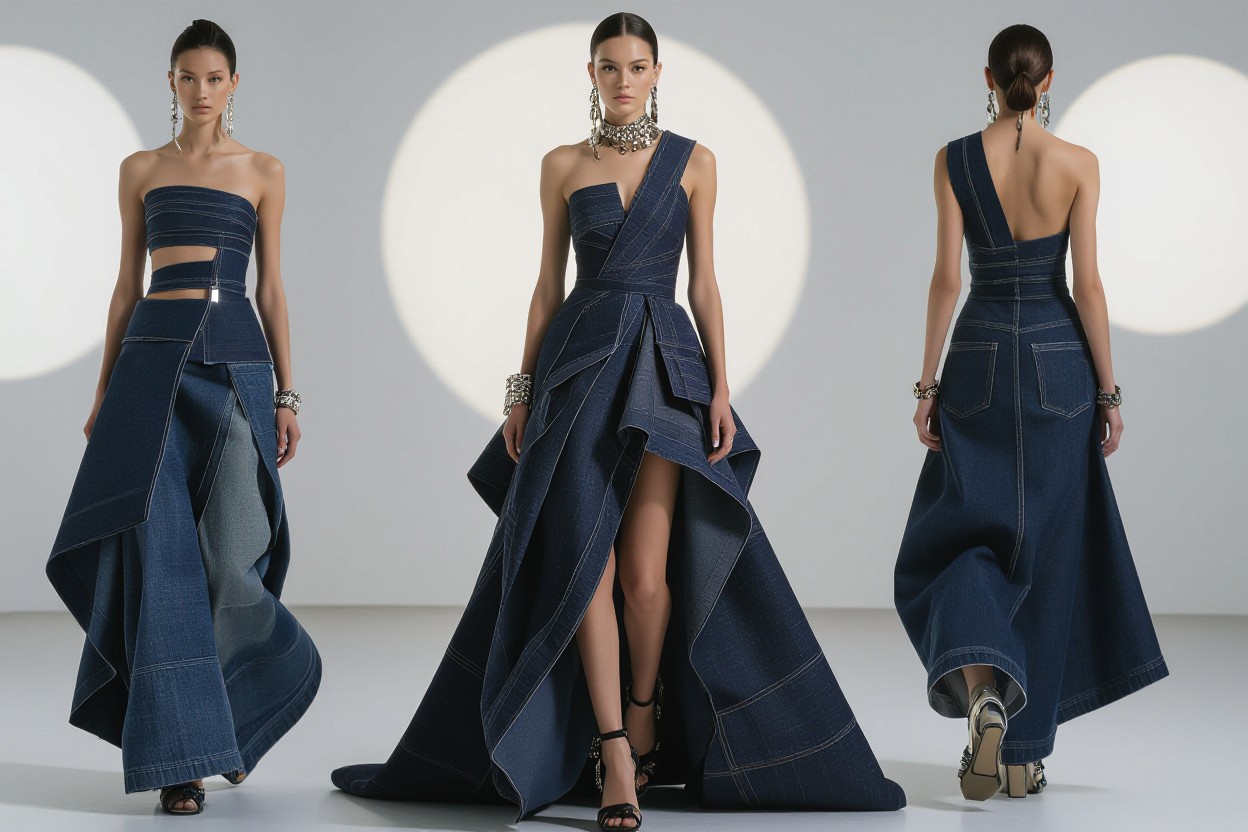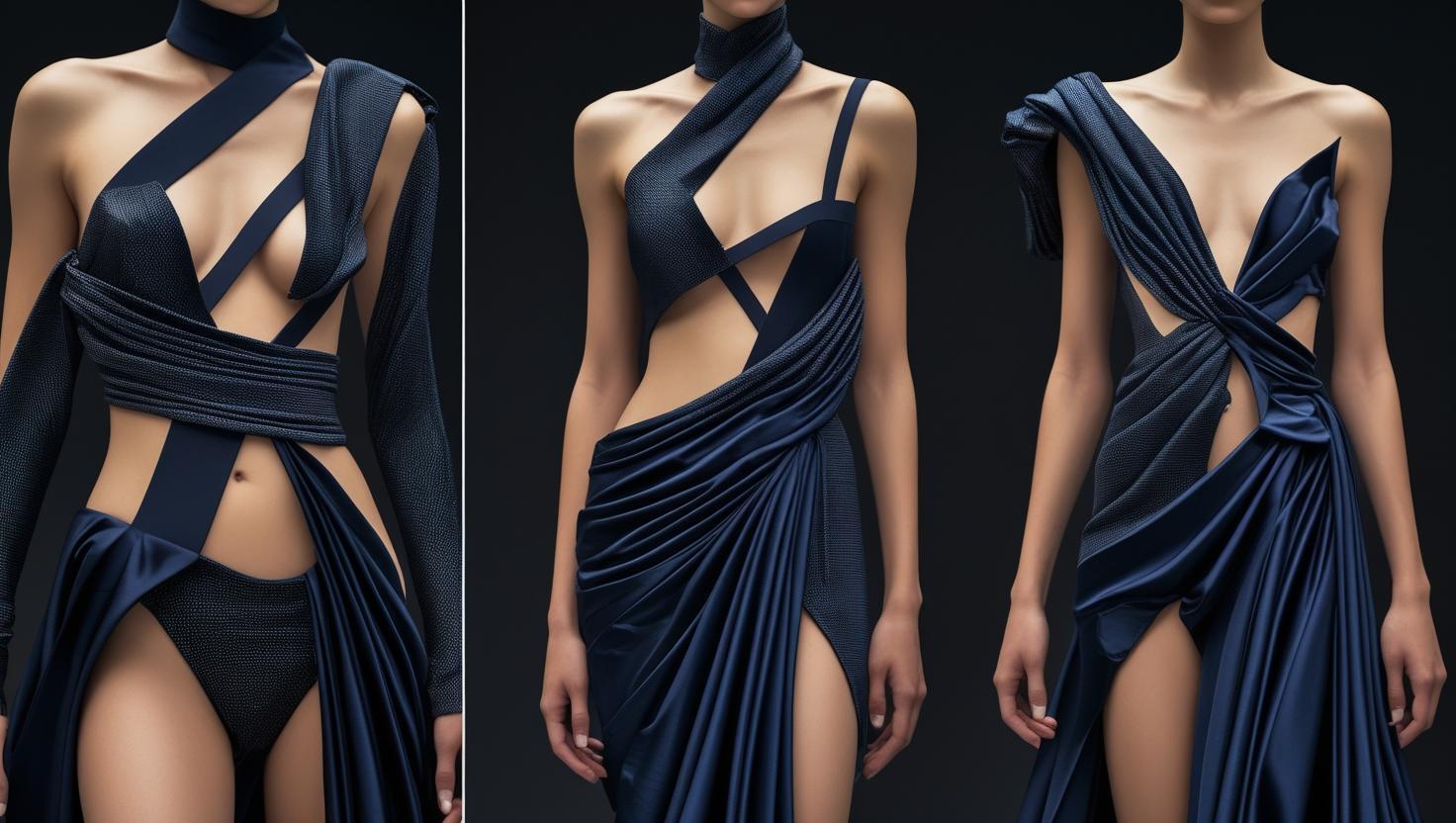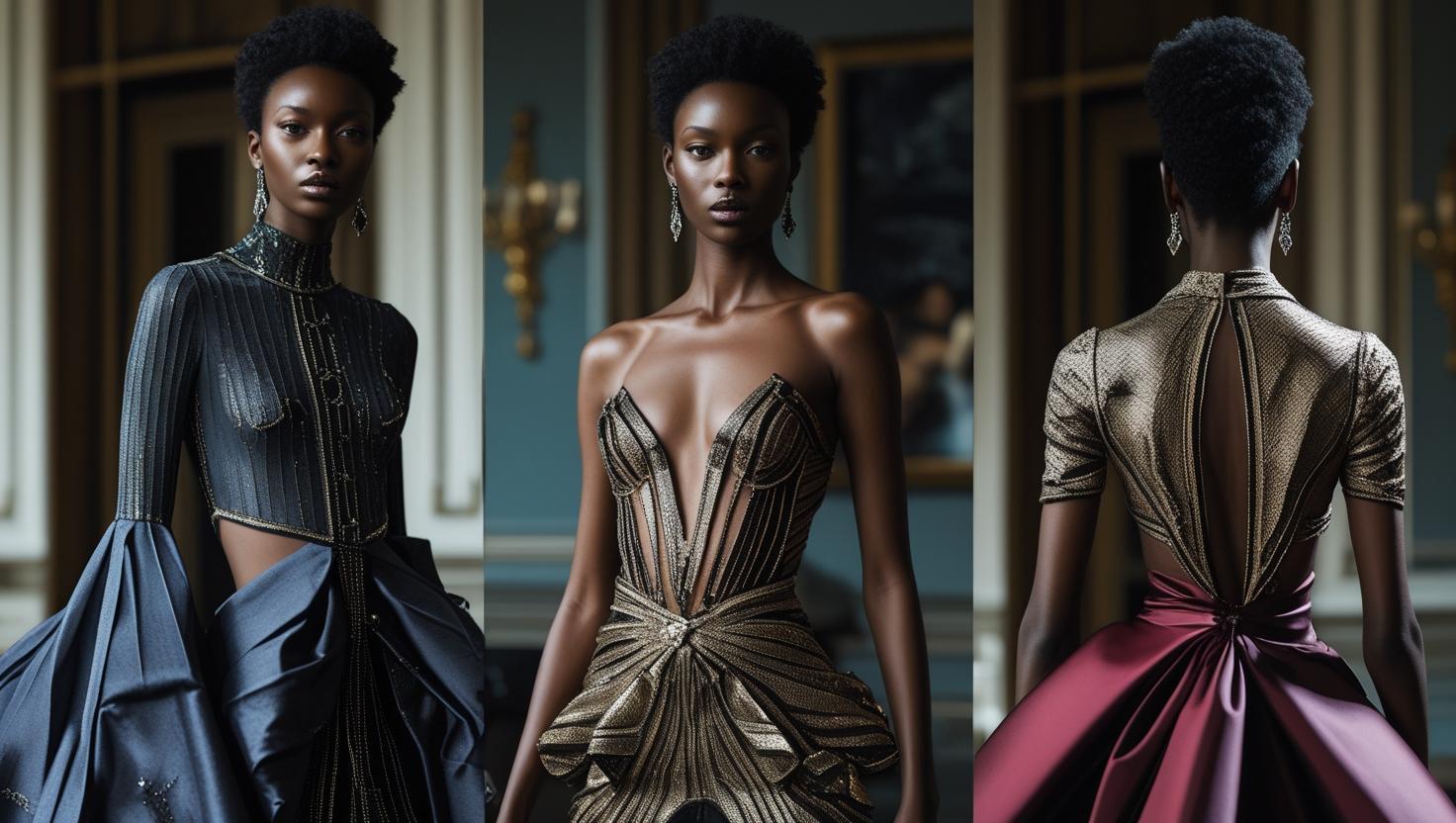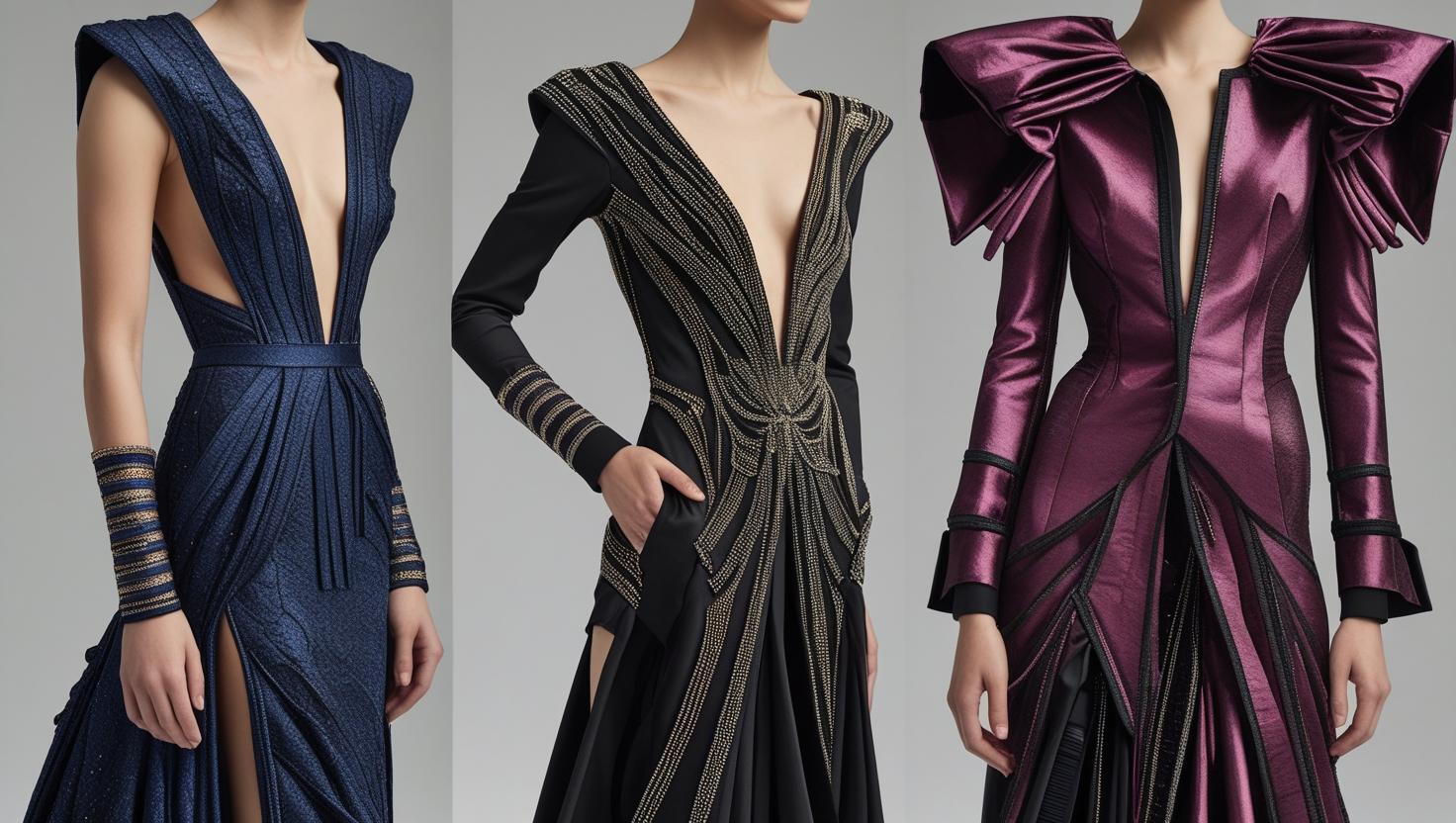8th Jul 2025
Deconstructed Eveningwear: How Raw Elegance Is Redefining Formal Fashion in 2025

Elegance is evolving, and in 2025, deconstructed eveningwear is at the forefront of this transformation. You’ll discover how designers break down traditional silhouettes to reveal raw, unapologetic craftsmanship that challenges conventional formalwear norms. This shift invites you to embrace imperfections and unexpected details, giving your wardrobe a fresh, bold edge. By understanding these innovative styles, you can confidently redefine your formal look with pieces that blend sophistication and avant-garde flair, making your personal expression through fashion more impactful than ever.
The Aesthetic Shift: Raw Materials Take Center Stage
You’ll notice designers are now prioritizing raw, unrefined materials that celebrate authenticity over polish. Fabrics like handwoven silk, untreated linens, and organic cottons reveal a striking new elegance by embracing their natural textures and imperfections. This shift not only challenges traditional notions of formalwear but also aligns with the rising demand for sustainable, eco-conscious fashion. By letting the material speak for itself, you get a tactile richness that imparts depth and character, turning what once might have been seen as flaws into defining features of your attire.
Exploring Textural Richness: Fabrics in Flux
Fabric choices in deconstructed eveningwear blur the lines between tradition and innovation. You’ll find delicate raw silks juxtaposed with coarse hemp blends, while hand-dyed and slubbed yarns introduce uneven textures that catch light differently. This flux invites your touch to explore diverse sensations, making the gown or suit a multi-sensory experience rather than just visual. Designers like Christopher John Rogers have shown how subtle irregularities in fabric weave can become focal points themselves, redefining what you expect from formal textures.
The Role of Imperfection: Beauty in Flaws
Imperfections have moved from markers of defects to celebrated hallmarks of individuality in formal fashion. Visible seams, raw edges, and asymmetrical cuts are intentionally integrated, creating garments that feel alive rather than lifelessly uniform. You’re encouraged to see these “flaws” as narratives woven into your outfit, making each piece unique and personal, instead of mass-produced and anonymous.
Delving deeper, the role of imperfection draws heavily on Wabi-Sabi philosophy, which finds profound beauty in transience and irregularity. Designers like Maison Margiela implement intentional distressing and asymmetry to disrupt conventional elegance, letting you carry stories of craftsmanship and human touch. Such details often require skilled artisanship, highlighting slow fashion principles and elevating your formalwear from mere clothing to a conversation starter, rich with cultural and artistic value.
Unconventional Structures: Rethinking Silhouettes
You’ll notice eveningwear in 2025 defies traditional formality by embracing unexpected shapes and asymmetry. Designers are manipulating volumes and angles, often merging rigid tailoring with soft draping to create striking contrasts. This approach overrides classic symmetry, encouraging your silhouette to tell a story of individuality. Architectural elements like exaggerated shoulders or deconstructed hems challenge preconceived norms, making your formal ensemble a statement of modern craftsmanship and forward-thinking design.
The Rise of Deconstructed Tailoring
Deconstructed tailoring strips back convention, exposing inner linings, unfinished seams, and raw edges that celebrate imperfection. You’ll find suits and gowns that disassemble traditional construction, offering relaxed fits with a rebellious edge. Designers like Simone Rocha and Thom Browne highlight this trend, blending sharp tailoring with undone details to give your formal pieces a fresh, avant-garde sophistication that feels both daring and wearable.
Fluidity and Functionality: New Forms of Elegance
Eveningwear is evolving toward fluidity, combining graceful movement with purposeful versatility. Fabrics engineered for stretch and resilience allow your garments to adapt seamlessly to your body and environment, making elegance practical. You experience this through sinuous silk blends and innovative mesh panels, crafting looks that flow effortlessly yet hold structure—a balance redefining what formal attire can achieve in comfort and style.
Building on this, designers are incorporating multifunctional elements like convertible sleeves, adjustable necklines, and detachable layers that let you personalize your silhouette throughout an event. This adaptability not only enhances comfort but empowers you to modify your look instantly, whether transitioning from a reception to a dance floor. Brands embracing sustainable practices invest heavily in these innovations, ensuring your eveningwear embodies both ecological awareness and progressive design, aligning fluidity with everyday functionality.

Gender Fluidity in Eveningwear: Breaking Traditional Barriers
Eveningwear in 2025 challenges the rigid binaries that once defined formal dress codes. As designers embrace gender fluidity, you’ll find collections that reject old norms, allowing you to express identity through versatile silhouettes and unexpected fabric pairings. This shift empowers you to wear evening attire that aligns with personal expression rather than conforming to outdated categories, reflecting a larger cultural move toward inclusivity and self-definition in fashion.
Designs that Defy Norms: Blurring Gender Lines
Look for tailored tuxedos paired with flowing chiffon, or suits incorporating traditionally feminine embroidery and draping. Labels like Telfar and Harris Reed are pushing boundaries by blending sharp tailoring with softer elements, creating pieces that seamlessly shift from masculine to feminine aesthetics. These designs invite you to rethink formality as a spectrum, where layered textures and asymmetrical cuts allow for dynamic, gender-neutral eveningwear options.
Consumer Demand for Inclusivity: Fashion’s Response
The rise in consumer demand for inclusive eveningwear has prompted more brands to expand size ranges, introduce unisex cuts, and market collections with non-binary styling in mind. Retailers such as Saks Fifth Avenue report a 40% increase in sales of gender-neutral evening pieces since 2023, signaling a shift in what you expect from luxury fashion—versatility that honors identity over tradition.
Fashion houses are no longer just experimenting; they’re embracing comprehensive inclusivity by involving diverse teams in design and marketing. This means you see more campaigns featuring non-binary and transgender models, and brands adopting flexible dress codes for events. The industry’s adaptation reflects a deeper understanding that eveningwear must accommodate varied embodiments and preferences, making the shopping experience more relatable and empowering for you, regardless of gender identity.
Sustainability Meets Elegance: Eco-Conscious Eveningwear
Eco-conscious designers now transform eveningwear by integrating sustainable practices without compromising sophistication. You’ll find gowns crafted from organic silks and recycled fibers that reflect a commitment to the planet and refined aesthetics. This fusion of sustainability and elegance challenges you to rethink luxury—not as extravagance, but as mindful artistry that respects resources and artisans alike, setting a new standard for formal fashion in 2025 and beyond.
Sourcing Ethical Materials: A New Paradigm
Luxury eveningwear brands increasingly prioritize traceable, ethically sourced fibers like organic cotton, Tencel, and deadstock fabrics harvested from overproduction. Collaborations with cooperatives using fair trade practices ensure your gown’s journey honors both the environment and the makers behind it. This shift means you can embrace high fashion knowing each element supports reduced waste and social equity—transforming your wardrobe into a testament of responsible elegance.
The Impact of Slow Fashion on Formal Wear Trends
Slow fashion’s emphasis on longevity and craftsmanship influences formalwear by encouraging timeless designs that resist fleeting trends. You’ll notice hand-finished details, modular components, and versatile silhouettes that adapt season to season. This approach cuts down on waste and embraces quality investment pieces, enabling you to build a curated collection of eveningwear that lasts—not just in style but in substance.
The broader adoption of slow fashion principles in eveningwear translates to a marked decrease in mass-produced, disposable dresses flooding the market. Designers focus on techniques like zero-waste pattern cutting and bespoke tailoring, which minimize fabric waste and elevate garment uniqueness. Brands such as Gabriela Hearst and Stella McCartney lead with collections emphasizing durability, repairability, and recycled embellishments, empowering you to prioritize meaningful consumption in formal occasions.
Trailblazing Designers: Visionaries Redefining the Scene
Designers pushing the boundaries of eveningwear in 2025 embrace deconstruction with fearless innovation. By upending conventional silhouettes and incorporating unexpected, raw elements, they craft gowns and suits that feel both rebellious and refined. You’ll find their work challenging traditional notions of luxury through asymmetry, raw edges, and organic textures, reflecting a new era where imperfection is celebrated as elegance. These visionaries are not just creating clothes—they're transforming formalwear into a bold statement of identity and artistry.

Profiles of Key Innovators: Meet the Game Changers
Icons like Lucien Asher and Nyla Martinez dominate this avant-garde movement, each weaving deconstruction into their design DNA. Asher’s use of unhemmed silk panels and exposed seams combined with Martinez’s experimental layering of recycled denim and frayed mesh exemplify this shift. Their work appears frequently on international runways, setting cultural trends and influencing major fashion houses. By following their journeys, you’ll gain insight into how enduring craftsmanship meets fearless creativity in modern eveningwear.
Signature Techniques: What Sets Them Apart
Frayed edges, exposed stitches, and deliberate asymmetry dominate the design language of these trailblazers. You’ll see garments that play with tension between construction and deconstruction, like raw-cut hems paired with luxurious fabrics or sautéed layering that creates visual depth. Their bold use of reclaimed textiles and innovative fabric manipulation challenges you to rethink what eveningwear can express—transforming 'unfinished' into a new standard of sophisticated allure.
Taking techniques beyond aesthetics, these designers employ hand-stitched exposed seams to emphasize the garment’s construction narrative, while unstructured bodices and uneven hemlines invite movement and dynamic silhouettes. They integrate recycled materials and natural fibers, elevating sustainability alongside artistry. This fusion encourages you to appreciate craftsmanship where every flaw is intentional, and every fray tells a story. The technical mastery behind distortion and layering creates garments that speak to both tradition and progression in formalwear.
Final Words
On the whole, deconstructed eveningwear is transforming formal fashion in 2025 by inviting you to embrace raw elegance with a fresh perspective. This trend encourages you to explore unconventional silhouettes and unfinished details that challenge traditional norms, allowing your personal style to stand out confidently. By incorporating these innovative designs, you redefine sophistication on your own terms, blending artistry with bold simplicity. As this movement gains momentum, your wardrobe can evolve to reflect a modern, authentic approach to eveningwear that balances refinement with creative freedom.


